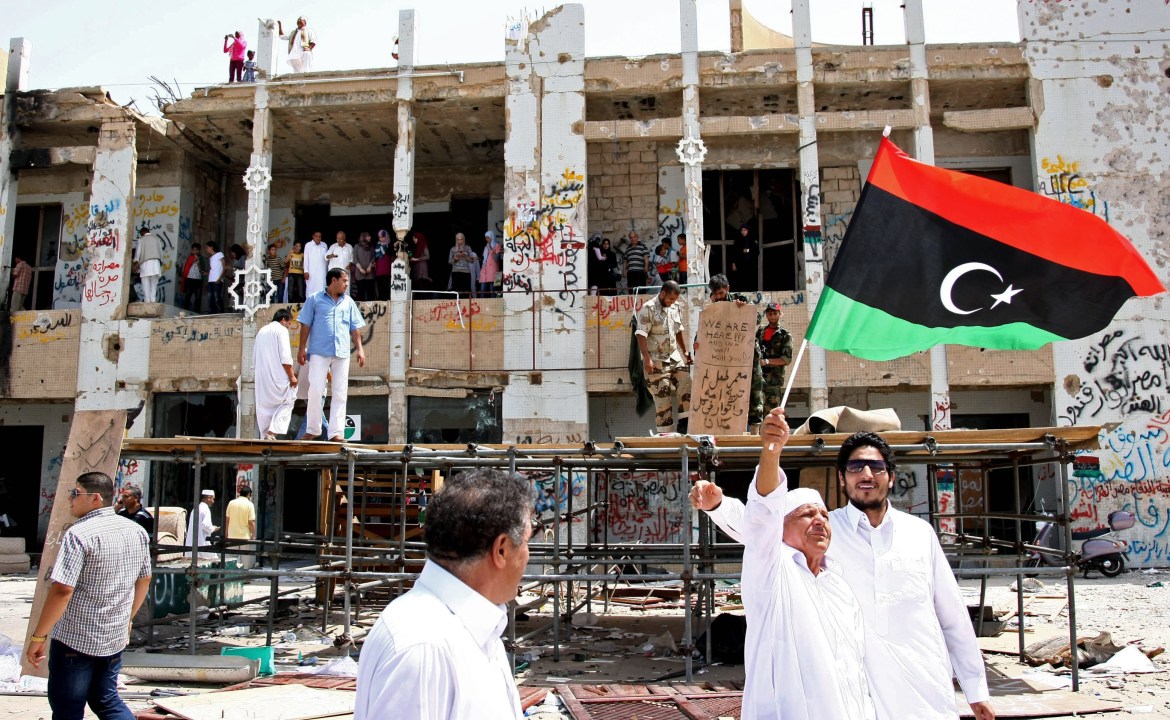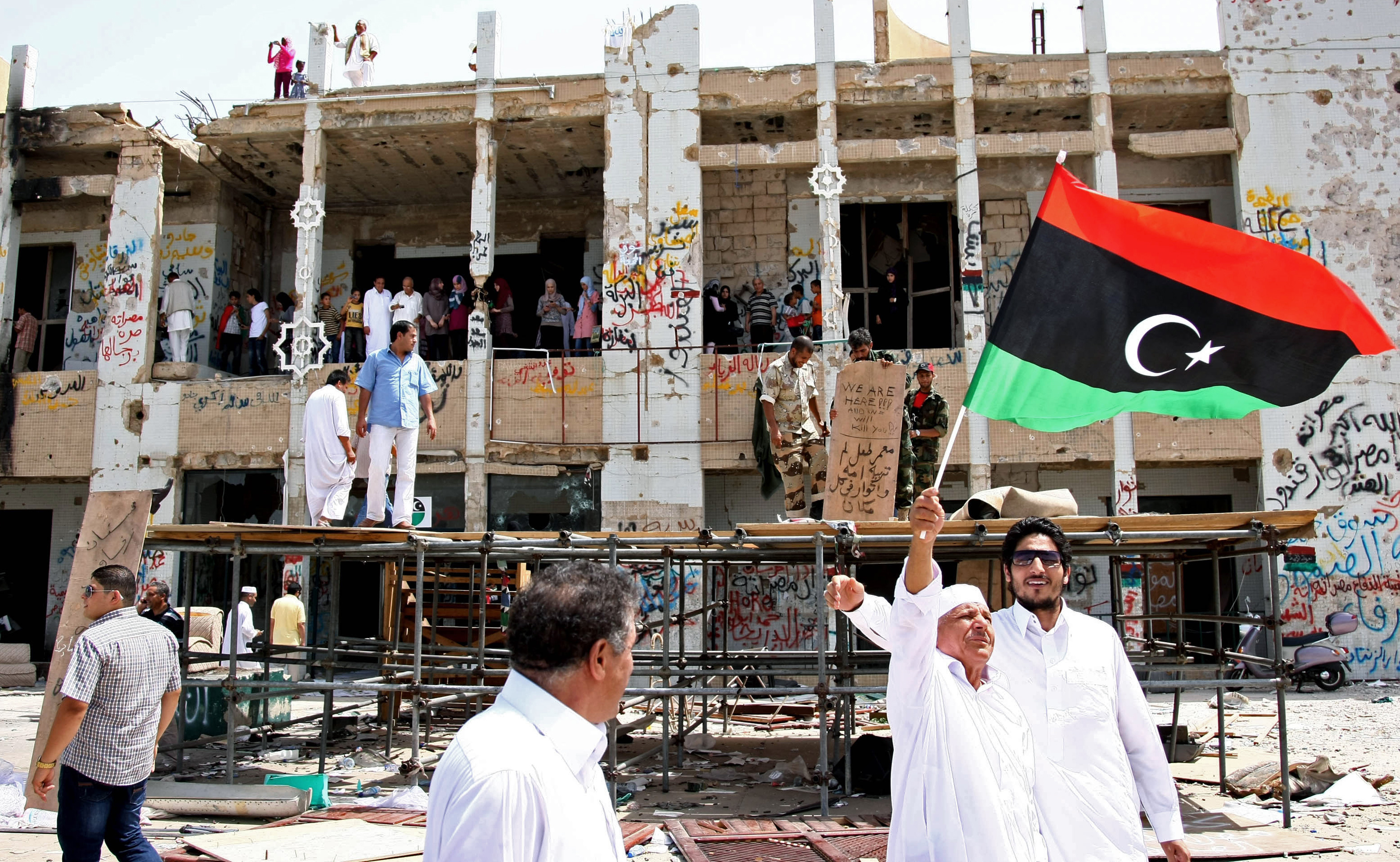 Tripoli
Tripoli
What to do on a weekend in revolutionary Tripoli? There’s no doubt about the city’s most popular family day out. Hundreds of cars and thousands of Tripolines drive into Bab al-Aziziya,
the Gaddafi family fortress. A vast compound strictly off limits for ordinary Libyans until only a few days ago is now the scene of the unlikeliest traffic jams. Threading their way through
shot-up, burnt-out armoured BMWs, drivers wind down their windows, honk their horns and shout out anything that comes to mind, “Free Libya!”, “Fuck off Gaddafi!”, “The
rat is finished!”
Gaddafi’s house resounds to cries of “Allahu akbar! God is great!” Crowds mill through with mobile phone cameras to the fore. A friend picks up a stash of Gaddafi propaganda
portraits as a war memento, puts them on a shelf for a moment and turns around only to see a thrilled Libyan ripping them up into tiny pieces. “Can you believe all this?” he says to no
one in particular, gazing around the dictator’s execrable home. “And the dog Gaddafi used to tell us he only earned 460 dinars a month.”
Across the compound, perched like exuberant sentinels on the top of a domed building beneath the outstretched wings of a faux-bronze eagle, two men wave the Libyan tricolour and scream at the top
of their voices. “Ana huna! Ana huna! I’m here! I’m here!” A gaggle of teenage girls giggle 50 feet below. These are the words that a fist-pumping Gaddafi was barking into a
television camera in a vainglorious bid to show that neither Nato nor the rebels had polished him off. He hadn’t fled. Now he has. Libyans love how the tables have turned.
We clamber down a metal ladder to traipse along the long passageways of subterranean Gaddafiland. For a man who has consistently derided the rebels as rats, Gaddafi seems to have shown an enormous
interest in preparing for life underground. A figure looms from the darkness. “Let’s look in here,” he says, ducking into a chamber. “Maybe the rat’s sleeping down
there.” More laughter.
For Ziyad al Shahawi, a human resources specialist at the Libyana Mobile Phone company, it’s the first time in Bab al-Aziziya. He can scarcely believe it. “Every day I feel more free.
Today, when I see the bunkers cleared of the rat I feel even safer. He’s gone. He’s really gone.”
This is a tale of two cities. From the astonished euphoria of Bab al-Aziziya we head to Abu Salim, dread words in Gaddafi’s Libya. This was where he had around 1,250 prisoners killed in cold
blood in 1996. Libyans say their bodies were fork-lifted into refrigerated trucks and driven away for a secret burial. More victims were gunned down as Tripoli fell on 20 August.
The atmosphere is instantly chilling, the architecture fearful. Metal doors bear the indentations of desperate prisoners banging frantically for medical treatment. Vast exercise yards, dazzling
white beneath the sun, lie deep in empty plastic water bottles.
Visiting today for the first time since he was released from a 10-year incarceration in 2005, the political prisoner Omar Saeed Ahmed al Kikli takes us to his former cell, a 20 square metre room
that contained anywhere between 10 and 25 people. It reeks of disease. He points out the holes hacked out through thick walls to allow prisoners to communicate and pass inhalers, small phials of
medicine. “Once the door was closed, that was it,” he says. “It was never opened again. This was the only way we could contact anyone. If you were caught you were beaten and put
into a tiny solitary cell.” He describes how he was electrocuted during his investigation. When he was first imprisoned, he says, he shared one blanket between three people for 18 months.
His calm descriptions of prison life as we wander through this monument to unspeakable cruelty wipe away the earlier joy of Bab al-Aziziya. But Omar is all smiles. “No, I’m not
sad,” he says. “I’m very happy. I’ve got my freedom back.”







Comments